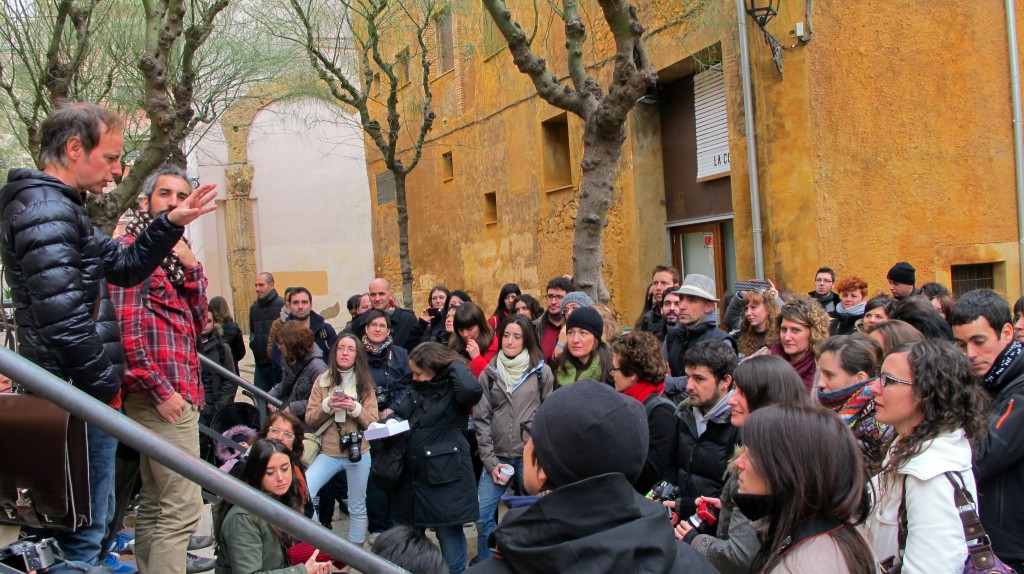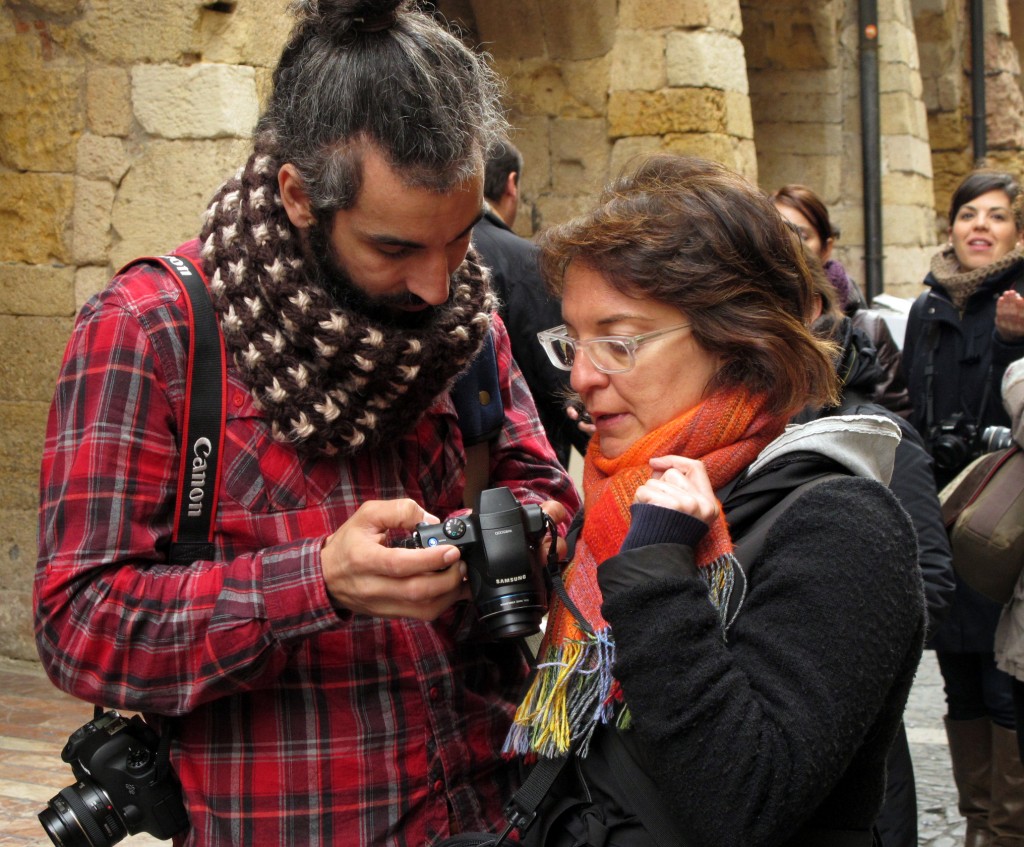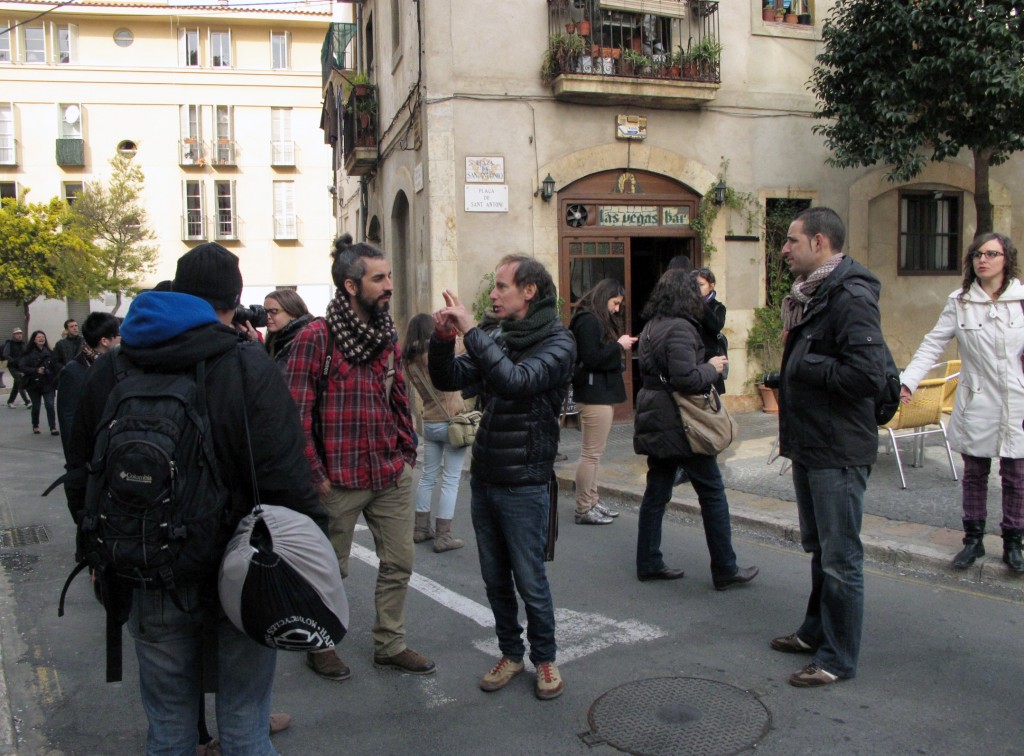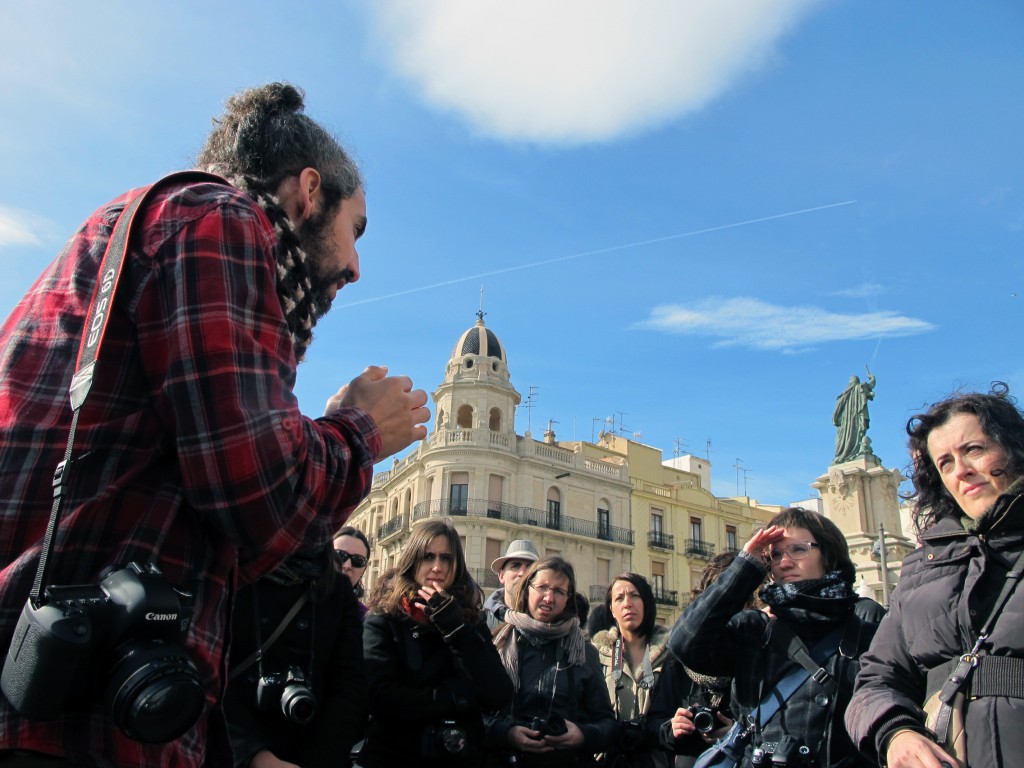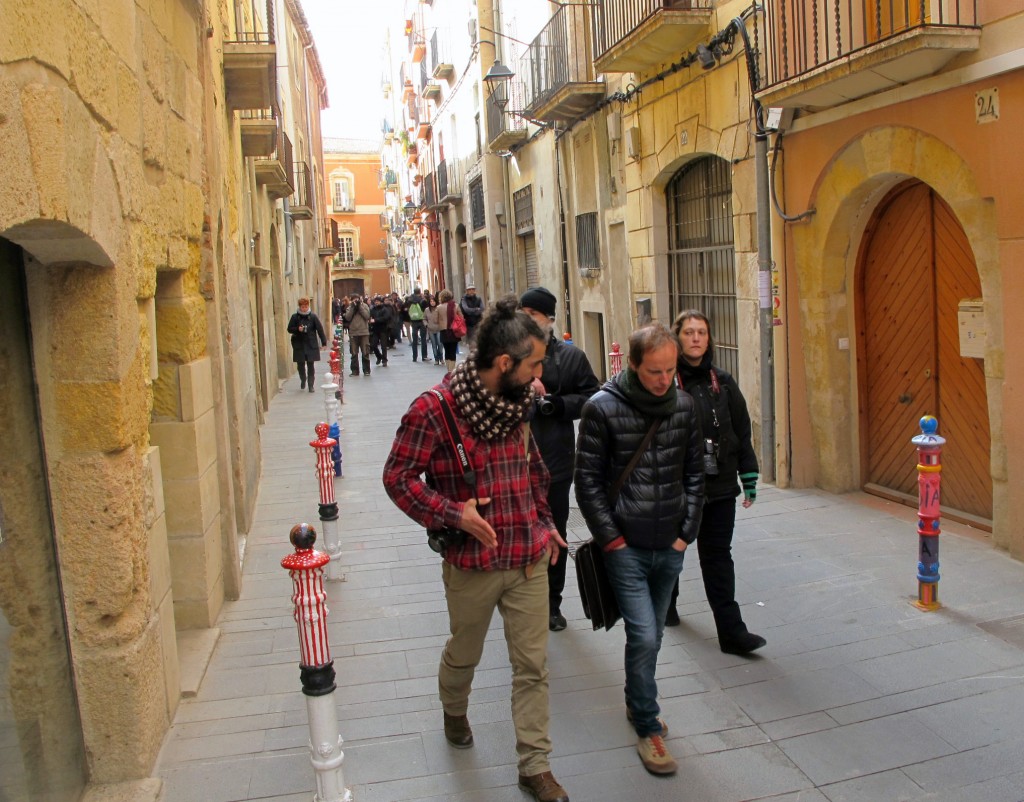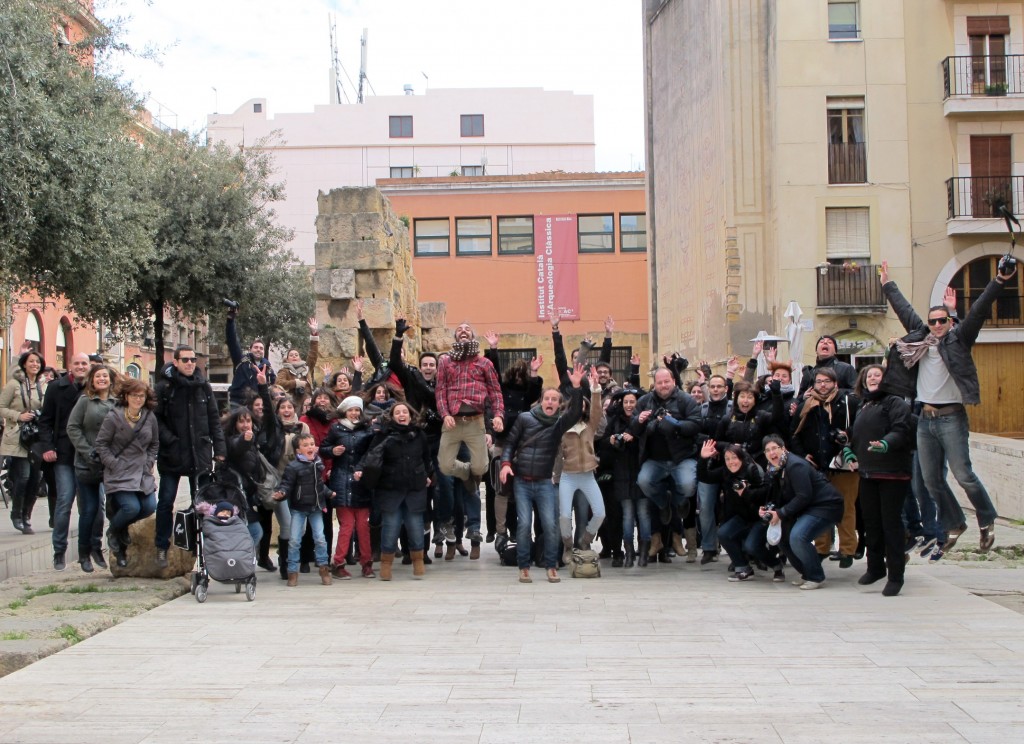Sunday, February 10. At precisely 10 o’clock on the dot, at “La Cocotte” coffee shop, in “Plaça del Rovellat”, there’s a sort of unusual excitement at this hour. Apparently, I am one of the hundred freaks, arrived from all over the area, who have confirmed their attendance at the workshop shared, for about four hours, by Álvaro Sanz. What first pops into my mind is: “This is what I call summon power”.
Those rounded up, professional photographers, both experienced and initiated or “level zero” –as labelled by Àlvaro Sanz for those who are mere amateurs–, start all with the same benefits: a healthy breakfast prepared by La Cocotte, a sweet place, charming and very, very recommendable indeed.
Álvaro Sanz introduces the activity due to be performed this morning in Tarragona, and that has already been tested before Christmas in Madrid. It is about exposing photography to different cities so that, in a joint and cooperative way, people get to rediscover and appreciate things, which are often closer to them, providing users with a new approach.
In every city, there’s a luxury host. And Álvaro, who has been the photographic extension of “Els Pets” for five years, immortalizing their concerts and tours, designing their outfits, and taking part in video clip editing, has asked Lluís Gavaldà to be our cicerone for one day, and to show everyone his own intimate and personal view of Tarragona. The morning, then, looks promising.
Lluís takes his turn to speak, while setting in a context: “We are now at the ‘Part Alta’, or high part of Tarragona, not the old part of the town”, he says. Let things be perfectly clear. “I would like to start by speaking about the sun, because Tarragona is almost always sunny, but today these clouds have spoiled it”. Despite this though, he finds an alternative point to make. The “plaça del Rovellat” connects with the “plaça del Fòrum”, one of the most beautiful and genuine spots of the city. “When I was a child –Lluís recalls– I used to live at the “plaça del Fòrum”, and one of my obsessions on my way out of home was to go through the roman door. I used to think: dearie me! Surely, about 2.000 years ago, a guy wearing a toga was doing exactly the same!
We walk across the square diagonally as if we were a Japanese army carrying cameras. And as proper freaks would do, we make use of both our hands to keep taking pictures and twitting at the same time. Álvaro asks us to tag any picture we upload to Twitter or Instagram as #poesiaenlaciudad, and so we do. If you do a search in any of these two social networks, you’ll find all the pictures of the day.
We walk across the arch at the “carrer de Merceria”, while stumbling into the Sunday merchants who, baffled by all the lenses, end up asking each of us 1€ per photo. We go upstairs towards the Cathedral, and merge into the tourist crowd visiting the see, waiting to go up the bell tower, or simply walking around (rather than buying) the several antiques stands. On the “carrer de Les Coques”, Lluís asks us to pay special attention. We might see “a la vella Montserrat despertant el barri a cops d’escombra tot cantant”, or “al bell mig de la plaça, a la peixatera prenent paciència amb la Consòl, que remuga i regala grans bafarades d’alcohol (literal transcription of the “Bon dia”, good morning, by Els Pets, Lluís Gavalda’s music group, describing some everyday symbolic scenes in Tarragona). We are now, for those who didn’t find out, at the Tarragona area that inspired Els pets to write that song. A realist painting, providing names and surnames.
We walk out the walls across the “portal de Sant Antoni”, and Lluís reminds us –and makes good use of them– the words with which he welcomed us: the sun has just arisen. “In Tarragona, it’s always a battle won for the sun; it’s like the weather is actually pushing us to have a drink, a vermouth (very typical in Catalonia)”. The scene chosen by the cicerone though, is not casual. In here, at the “Passeig de Sant Antoni”, there are two of the main elements, which give the city its particularities: the wall stone and the Mare Nostrum.
It is now time to “tocar ferro”, or knock on iron –a similar expression to knock on wood– at the “Balcó del Mediterrani”, one of the most rooted traditions. Lluís warns us that anyone touching the iron railing will be blessed with good luck, and it is likely to come back to Tarragona in the future. I recall a few coins thrown at the “Fontana di Trevi”, in Rome, every time I’ve been to the Italian capital… Therefore, it works!
Making the most of the sun shining, Álvaro tells us about a few secrets regarding how to make use of our cameras when the light is too bright. He’s not only an excellent photographer, but he has also loads of patience with most of us.
We go back into the “Part Alta”, now across the “Plaça de la Font”, main spine of the roman Circus of Tarraco in the past. It’s getting late though, and we really get cracking. Walking up the “carrer Major”, we turn at “Cavallers” to get into one of the most photogenic streets: the “carrer de Comte”, now renamed as “Pylon street”, due to all the coloured bollards (piló in Catalan).
Four hours have passed flying, rediscovering spots, details, spaces… We find ourselves at the starting point, at the “plaça del Fòrum” which –I didn’t mention this before, so I will now– is a “vermouth zone”. We take the group picture, and Álvaro asks us a very last effort: a jump for the photo. So let’s jump!
*Translated by Artur Santos


